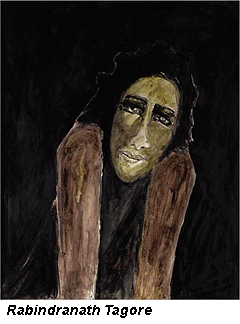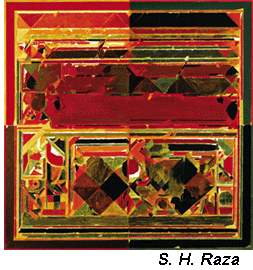- Prelude
- Guest Editor’s Column
- Creative Impulse
- Horloges : Counting The Hours
- Aesthetic Movement: Aesthetic furniture
- Book Review
- Engraving Deeper Thoughts:
- In the News
- Artist Index and Statistics
- Market Insight
- Auction Reports
- Photo Feature
- The month that was
- Mumbai Artsighting
- Art Bengaluru
- Musings from Chennai
- North-East Opsis
- In between – from Vadodara
- Deccan Odyssey
- Inscriptions in Bronze
- Writing Visuals
- A Missing History: The Other Story Re-visited
- Invisible Cities
- His Story
- Erasing Borders Exhibition of Contemporary Indian Art of the Diaspora
- Urban Testimonies
- The Medium Speaks Back
- Indian Art & Fashion goes to Sweden
- Mahanagar@Kolkata
- Different hues of Aakriti
- Christie’s : Important Watches Hong Kong
ART news & views
Market Insight
Volume: 2 Issue No: 6 Month: 7 Year: 2010
Right from Christies via Sotheby's to Saffronart online sale culminating with Osian's, the highlight for the month at auction houses was contemporary Indian art as well as National Treasure Artists.
The toast of the month obviously was Syed Haider Raza who, despite living in  France since 1950 still maintains very strong ties with the country of his birth. Both at the Christies auction of Contemporary Indian Art as well as the summer online auction at Saffronart, it was Raza all the way. Experts believe that Saffronart's results were amply influenced by the world record set by Raza a few days back on the Thames' shore, which finally toppled Francis Newton Souza's record of being the highest priced Indian artist.
France since 1950 still maintains very strong ties with the country of his birth. Both at the Christies auction of Contemporary Indian Art as well as the summer online auction at Saffronart, it was Raza all the way. Experts believe that Saffronart's results were amply influenced by the world record set by Raza a few days back on the Thames' shore, which finally toppled Francis Newton Souza's record of being the highest priced Indian artist.
However, it was the Rabindranath Tagore series of 12 paintings that Sotheby's put up as part of its Darlington Hall Sale in London, that actually caught eyeballs as well as initiated major media coverage towards the end of the June. And art enthusiasts were surprised to see how Tagore's rare pieces, till now part of a private collection of the Elmharst family in Great Britain, not only notched up huge prices (12 small paintings going for somewhere near to 11 crores) but also failed to return to the homeland of the artist, despite efforts on the part of the Government of India.
John Elliot, the veteran British journalist wrote in his blog on June 23- ridingtheelephant.wordpress.com “It was never going to be easy for last week's buoyant Sotheby's and Saffronart modern South Asian art auctions to match up to the excitement of Christie's Souza retrospective sale a few days earlier, but they certainly did well with prices which showed that the top end of the modern Indian art market is firmly on the rebound after the 2008-09 crash.”
And that is where the catch lies. In an increasingly buoyant market, which is setting newer records by the day (Alberto Giacometti's bronze sculpture Man Walking I setting a world record at $104.3 million with premium at Sotheby's London last February, only to be toppled by Picasso's Nude Green Leaves and Bust that went for $106.5 million within two months at Christie's) Indian artists have competed in equal measure last month.
While Raza's Saurashtra at the moment the highest priced Indian art piece notched up $ 3.49 million, Sotheby's raised $7.9 million and Saffronart $6.7 million in two separate auctions under separate conditions (Sotheby's being an on-floor auction including telephone bidding and Saffronart's being online, including telephone bidding), only goes on to show how much Indian artists have returned to the fold, after a major slump.
All that is very good, but at the same time, what we need to remember is that in the world art market, it is still the Bombay Progressive Artists group that fetches the best prices, despite the Calcutta Contemporary Artist's group still producing some fascinating works.  Tagore's pricing is a stray example in many ways. Firstly, the enormous emotional value that was attached with the Darlington Trust series, especially considering the fact that Rabindranath Tagore is a national Heritage Artist, whose works, by law are not supposed to figure outside the borders of India and secondly by the over-the-top media blitzkrieg that took over the pre and post sales days, when a lot of debate was raised regarding the art-treasures failing to return to India, which, incidentally was not the case with Raza, whose Saurashtra was picked by a private museum based in India.
Tagore's pricing is a stray example in many ways. Firstly, the enormous emotional value that was attached with the Darlington Trust series, especially considering the fact that Rabindranath Tagore is a national Heritage Artist, whose works, by law are not supposed to figure outside the borders of India and secondly by the over-the-top media blitzkrieg that took over the pre and post sales days, when a lot of debate was raised regarding the art-treasures failing to return to India, which, incidentally was not the case with Raza, whose Saurashtra was picked by a private museum based in India.
This has given rise to a debate regarding the failure of contemporary Bengal artists to raise their pricing in the world market. The only person who lives and works from Kolkata and still commands a steady pricing at the world art market is Jogen Chowdhry. Even Subodh Gupta, who had till recently commanded a steady market despite the slump suffered a setback at the Sotheby's auction, where his oil-on-canvas Airport Luggage Trolley fetched only $2,50,000, a fifth of his record price paid for a very similar trolley in 2008. Gupta though did much better at Saffronart's auction and gained quite a lot of ground with his Cycle Milk Sellers doubling top estimates to fetch $494,500 million including premium.
All that is very well, but the fact remains that when it comes to investing in Indian art the Bombay Progressive School including Raza, Suza and Hussain are notches higher in terms of rational investment options as compared to the Calcutta Contemporary Artists group. And this could only mean one thing the art market is simply not dictated by sheer quality of works. It involves other factors too, especially patronage. Without de-meriting potential of works by Souza, Raza and Husain, let us also not forget the lack of over-the-top patronage for the contemporary Bengal School back home as well as an absence of aggressive promotion on the part of the artists themselves.